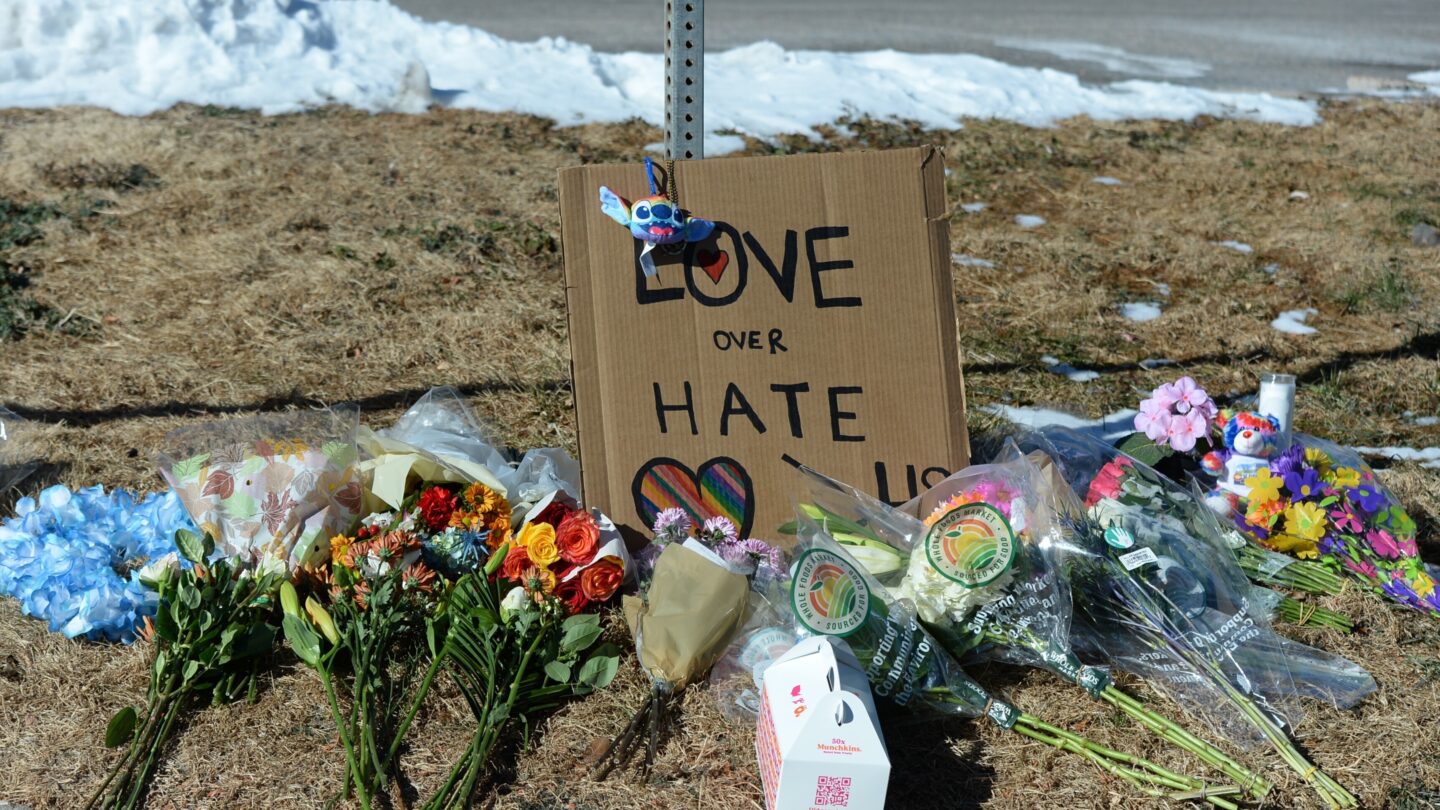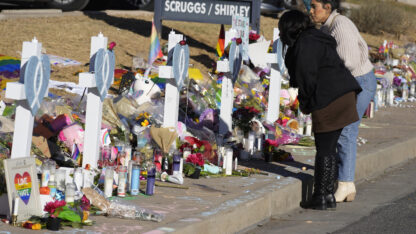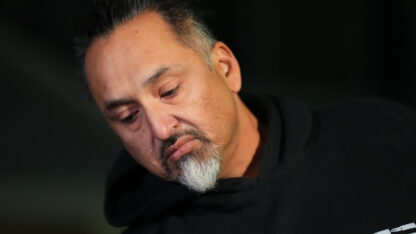The tragic shooting at Club Q, an LGBTQ club in Colorado, is the latest event to transpire in a year marked with a jump in anti-LGBTQ legislation and sentiment, according to LGBTQ advocates.
The shooting, the deadliest attack on LGBTQ people in the U.S. since the Pulse shooting in 2016, occurred on the eve of this year’s Transgender Day of Remembrance. Just days earlier, the National Center for Transgender Equality released a report finding that at least 47 transgender people were killed in the past year.
And research is painting a bleak picture when it comes to the lives of LGBTQ Americans: The rate of suicidal thoughts among LGBTQ youth is also on the rise, and is particularly affecting both queer people of color and trans youth.
Meanwhile, across the country, legislators introduced more than 300 anti-LGBTQ bills across 36 states in the past year, according to the Human Rights Campaign, an advocacy group.
Some advocates say violence can be the end result of political efforts geared toward removing protections from LGBTQ Americans.
“You tolerate hateful language, it leads to hateful legislation and it leads to hateful violence,” Kevin Jennings, the CEO of Lambda Legal, an LGBTQ civil rights organization, told NPR. “This is not an accident.”
In Florida, legislators passed the controversial so-called “Don’t Say Gay” bill into law, with Alabama following suit with its own version. In Virginia, the education department’s new policies reverse the rights of trans students in bathrooms.
And in the courts, the Supreme Court’s reversal of Roe v. Wade is putting gender-affirming health care in jeopardy.
The year of political action was a strategic move, according to some advocates, ahead of the year’s midterm elections.
“It is so cynical, but it is true,” Sam Ames, the director of advocacy and government affairs at the Trevor Project, said. “LGBTQ youth, particularly trans youth, have been identified as a very effective wedge issue in a very contentious electoral season.”
A year of gains and setbacks
But the year has also been one with other milestones, including a “rainbow wave” of openly LGBTQ candidates who ran — and won — this election year, including the first out trans man to elected to a state legislature.
The number of people identifying as LGBTQ also rose to 7.1%, according to a Gallup Poll, from 5.6% in 2020.
“One thing we’ve seen is the number of queer and transgender people who feel comfortable and safe to come out continues to grow even in the face of an escalating and violent backlash,” said Gillian Branstetter, communications strategist at the ACLU’s Women’s Rights Project and LGBTQ & HIV Project. “That’s because people see more hope in living an authentic life than in living an inauthentic one.”
Some advocates say backlash is a standard response.
“In this country, we go two steps forward and we often end up going several more steps back,” Ames said. “We have seen incredible gains made legally in the last 10 years, 15 years. And we’re starting to see the backlash against those gains and backlash so often falls heaviest on the least powerful.”
Jay Brown, senior vice president of programs, research and training for the Human Rights Campaign, said that it’s typical to see “this kind of vitriol rise” during an election year, though it seemed less effective this time around.
“We saw millions of dollars be poured into anti-trans campaign ads during this election,” Brown said. “Fortunately, many of those elected officials lost their races.”
And that is enough to inspire others to keep going.
“People, as what happened in Colorado Springs last night, are literally dying because of our society’s failure to do the right thing,” Jennings said. “We can’t accept that. And we have to keep moving forward. It would be disrespectful to the memory of the people who died.”
Copyright 2022 NPR. To see more, visit https://www.npr.org.
9(MDAxODM0MDY4MDEyMTY4NDA3MzI3YjkzMw004))

9(MDAxODM0MDY4MDEyMTY4NDA3MzI3YjkzMw004))









